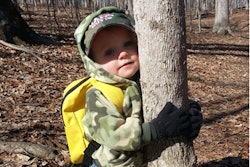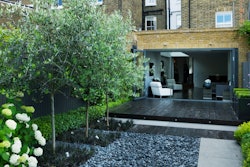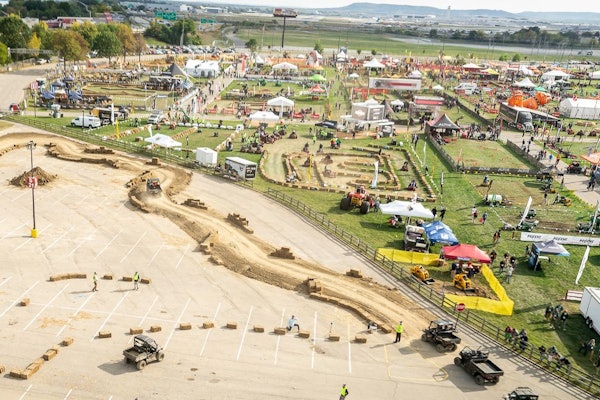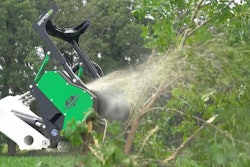
One of the exciting things about the arrival of fall is the transformation that deciduous trees’ foliage undergoes. If your client isn’t among the leaf peepers who travel to see these colorful displays, it doesn’t necessarily mean they have to miss out.
Since the fall is primetime to install trees, shrubs, and ornamental grasses, here are a selection of plants that can bring the colors of fall to customers’ backyards.
________________________________________________________
Chinese Pistache (Pistacia chinesis)
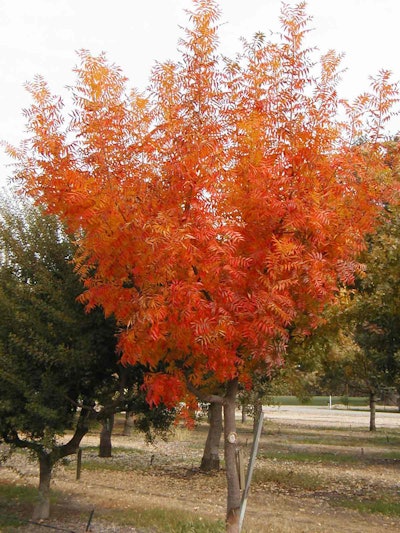 Photo: Wikipedia
Photo: WikipediaThis hardy tree can handle a number of poor quality soils and drought conditions. It has been called the “Ugly Duckling” because it starts out misshapen but grows into a beautiful shade tree. Its green leaves will turn yellow, then orange then red as it progresses through fall. Its seeds provide food for birds. Grows 25 to 35 feet tall and 25 to 35 feet wide.
- USDA Hardiness Zone: 6-9
- Full sun
________________________________________________________
Pheasant’s Tail Grass (Anemanthele lessoniana)
Also known as New Zealand Wind Grass, this ornamental grass is evergreen with a fountain-like growth habit. The thread-like leaves turn copper, gold and bronze in the fall adding color to the landscape. It can be used in borders, container gardens, or prairie plantings. It can tolerate heavy clay soils and is drought and deer tolerant. Grows 2 to 3 feet tall and wide.
- USDA Hardiness Zone: 8-10
- Full sun to partial sun
________________________________________________________
Gro-Low Fragrant Sumac (Rhus aromatic ‘Gro-Low’)
This easy to grow shrub can tolerate poor, dry soils. It can serve as a ground cover, border or work in a rustic woodland garden. Its leaves are fragrant when brushed against or crushed. It is a fast grower that has brilliant red foliage in the fall. Grows 1 to 2 feet tall and 6 feet wide.
- USDA Hardiness Zone: 4-9
- Partial to full sun
________________________________________________________
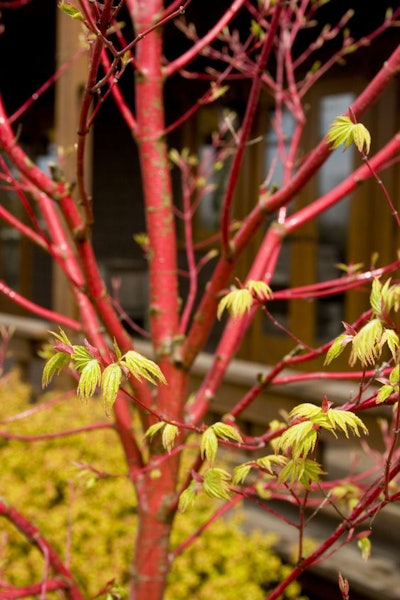 Photo: Monrovia
Photo: MonroviaCoral Bark Japanese Maple (Acer palmatum ‘Sangokaku’)
A beautiful small tree that can serve as a focal point not only during fall but winter as well, this tree has coral bark as the name suggests. Its lime green leaves with red edges turn golden orange in the fall. It thrives in cool spaces and tolerates urban pollution. Grows 15 to 20 feet tall and 10 to 15 feet wide.
- USDA Hardiness Zone: 5-8
- Partial to full sun
________________________________________________________
Regal Mist Pink Muhly Grass (Muhlenbergia capillaris ‘Lenca’)
 Photo: Monrovia
Photo: MonroviaThis ornamental grass is relatively small and features airy deep pink flowers that bloom from late summer to fall. When planted in masses it effectively softens a landscape and blurs edges while shimmering in the wind. It can be mixed into the landscape or set apart in containers. Grows 4 feet tall and wide.
- USDA Hardiness Zone: 6-9
- Partial to full sun
________________________________________________________
Brilliant Red Chokeberry (Aronia arbutifolia ‘Brilliantissima’)
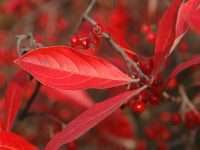 Photo: oregonstate.edu
Photo: oregonstate.eduJust as the name suggests, this deciduous shrub features brilliant red foliage and glossy red fruit. It is slow-growing and can tolerate boggy soils. It can be used as a mass shrub border or along ponds and streams. Its berries can attract birds. Grows 6 to 8 feet tall and wide.
- USDA Hardiness Zone: 4-9
- Partial to full sun
